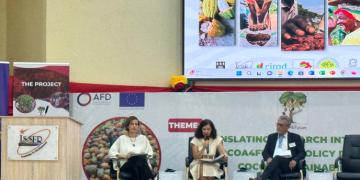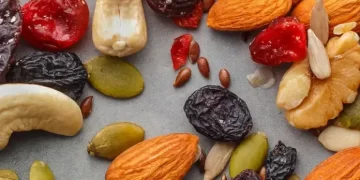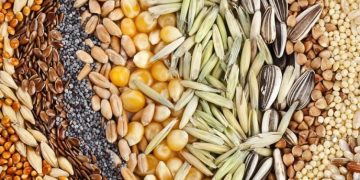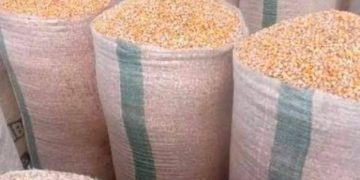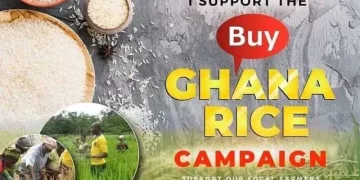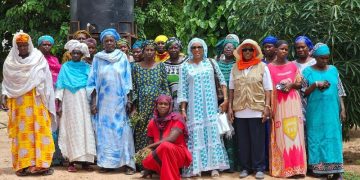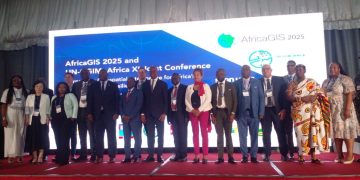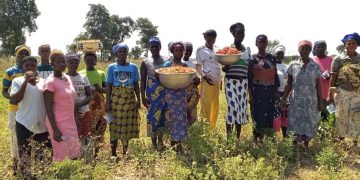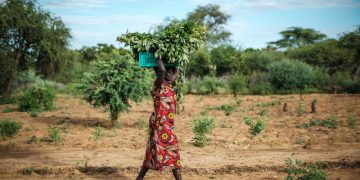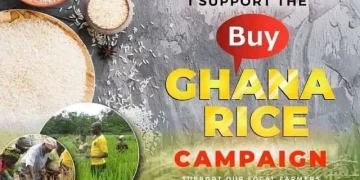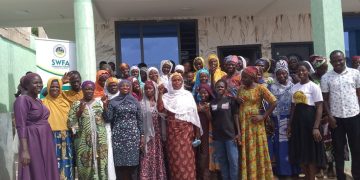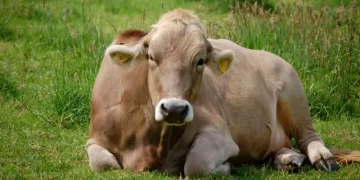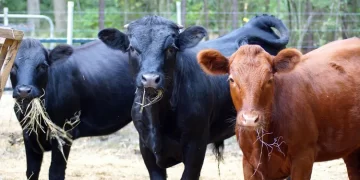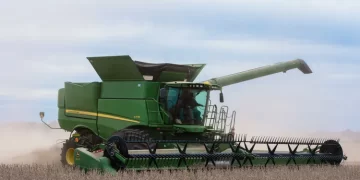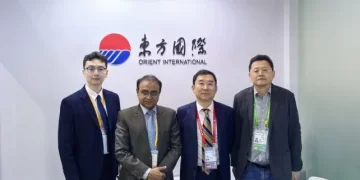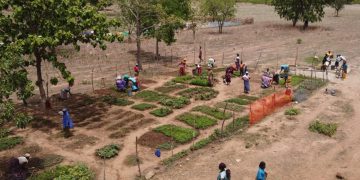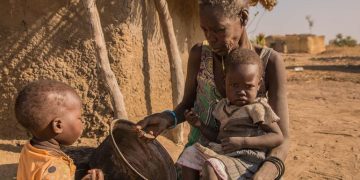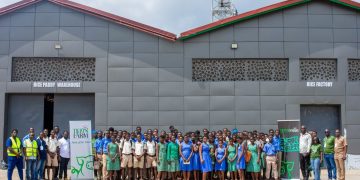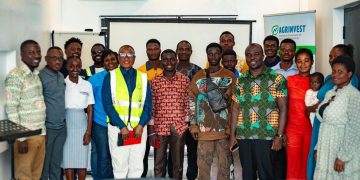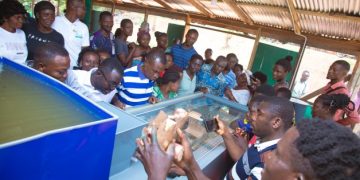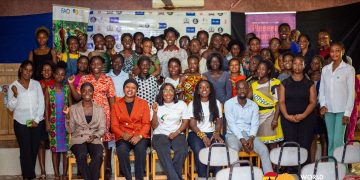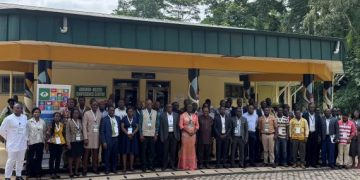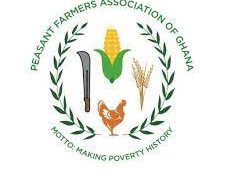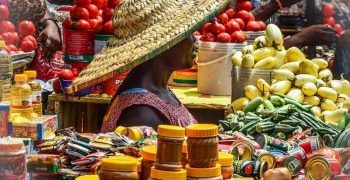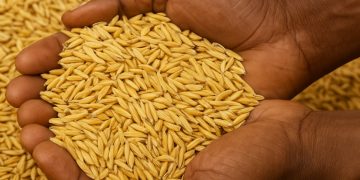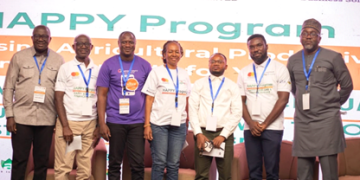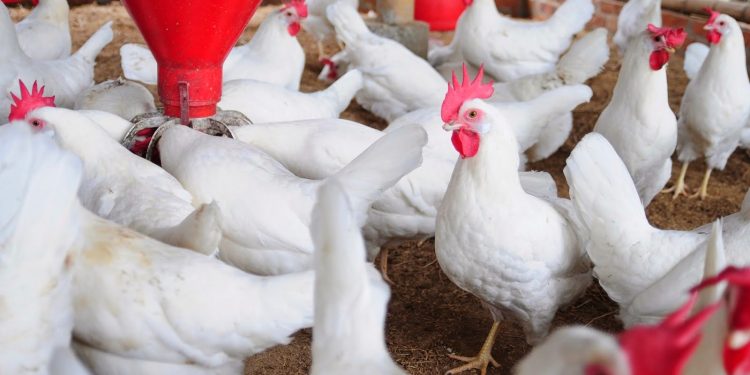Minister for Food and Agriculture, Eric Opoku, has said as part of efforts to strengthen the poultry value chain, the following is being done.
50,000 four-week-old guinea keets supplied to 5,000 households for backyard poultry production;
50,000 fourteen-week-old pullets supplied to 500 female farmers for egg production; and 50,000 broilers and 50,000 guinea fowls supplied to commercial poultry farmers at a 50% subsidy on Day-Old Chicks,
This has been complemented by feed, vaccines, and medication.
In addition, the project facilitates the distribution of critical fertiliser and seed inputs to participating districts, including:
46,400 bags (50kg) of NPK fertiliser for maize
1,080 bags (50kg) of fertiliser for rice
5,200 bags (50kg) of fertiliser for soybean
23,740 bags (50kg) of urea
15,460 bags (50kg) of organic fertiliser for vegetables.
4,400 bags (50kg) of rice seed
520 bags (50kg) of soybean seed
100 bags (50kg) of cowpea seed
5,000 bags (50kg) of maize seed
Mr Eric Opoku said this while highlighting gains made in the agric sector and other policies rolled out to boost food production and develop Agriculture in Ghana, at the Government Accountability Series, in Accra on Monday, November 24.
Mr Eric Opoku, further revealed that the Government of Ghana and the Korea Rural Cooperation (KRC) are developing irrigation infrastructure on 100 hectares of land.
This is to support rice seed production in Ghana, he said.
He assured that the Mahama administration is improving irrigation systems in the country to ensure all-year-round farming.
He further stated that 10,000 tons of high-quality rice seed will be produced by 2027. “Ghana will be well on its way to rice seed independence,” he said.
Regarding food inflation, Mr Eric Opoku recounted that it rose to an unprecedented 61% in January 2023, was at 28.3% in January 2025 but stood at 9.5% by October 2025.
He further announced the following key developments under the Feed Ghana Programme, in the past nine month:
Construction of 10 new small dams.
Rehabilitation of 8 existing irrigation dams
250 solar-powered boreholes for farming communities and second-cycle schools across the five regions of the north, Bono and Ahafo regions.
Rehabilitating the following Irrigation Schemes is ongoing.
Vea Irrigation Scheme in Bolgatanga and Bongo districts of Upper East Region. Land Size: 850 hectares.
Weta Irrigation Scheme in Ketu-North Municipal of the Volta Region. Land Size: 880 hectares.
Tanoso Irrigation Scheme in Techiman Municipal of the Bono East Region. Land size: 100 hectares.
Kpong Irrigation Scheme in Shai Osudoku and Lower Manya districts in the Greater Accra and Eastern regions. Land size: 930 hectares.
Ashaiman Irrigation Scheme in Greater Accra. Land Size: 200 hectares.
Aveyime Irrigation Scheme in the Volta Region. Land Size: 245 hectares
25 solar-powered boreholes 15 have been completed and the remaining 10 will be completed in the first quarter of 2026.
44 solar-powered boreholes for selected districts in the northern part of the country.
Processes have begun for the construction of the following new Inland Valleys for rice production:
Anunuso Inland Valley in Anunuso, Brofoyedu, Nkwawkwanua and Awaham communities in the Ashanti Region. Land size: 175 hectares.
Atonsu Inland Valley in Atonsu and Abramaso communities in Ashanti Region. Land size: 150 hectares.
Kawampe Inland Valley in Kwawampe, Tanfulto, Kaaka, Tadefufuo, Tahiru Akura, Chiranda, Atta Akura, and Abrewanko communities in the Bono East Region. Land size: 647 hectares.
Odaho & Odamu Inland Valleys in Yaw Nkrumah and Donuaso communities in the Ashanti Region. Land size: 114 hectares.
Waamu-Kumi Inland Valley in Waamu Kumi and Offinho communities in the Ashanti Region. Land size: 114 hectares.









